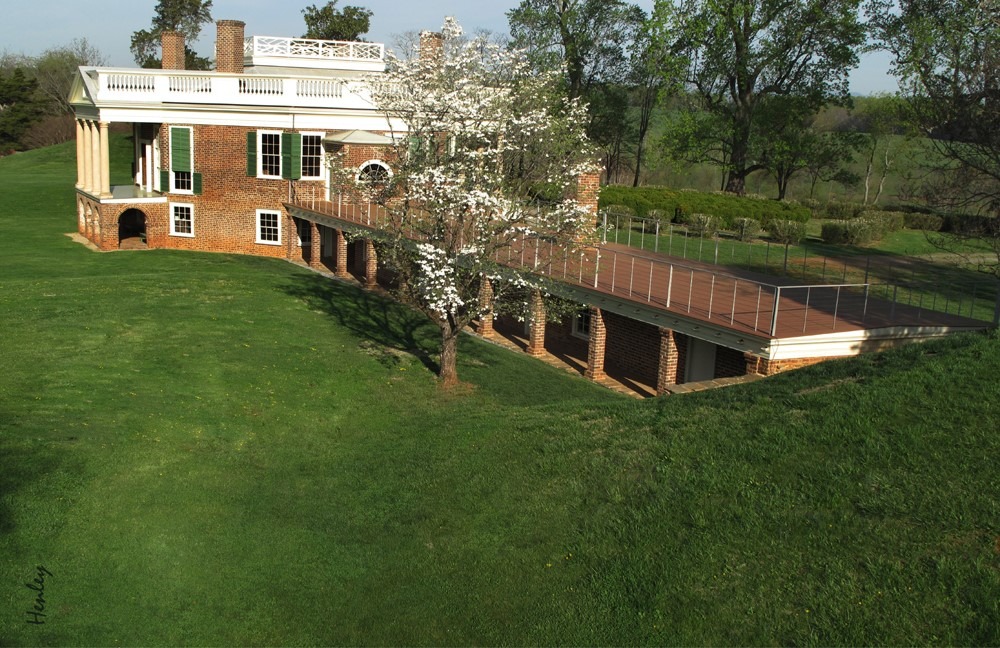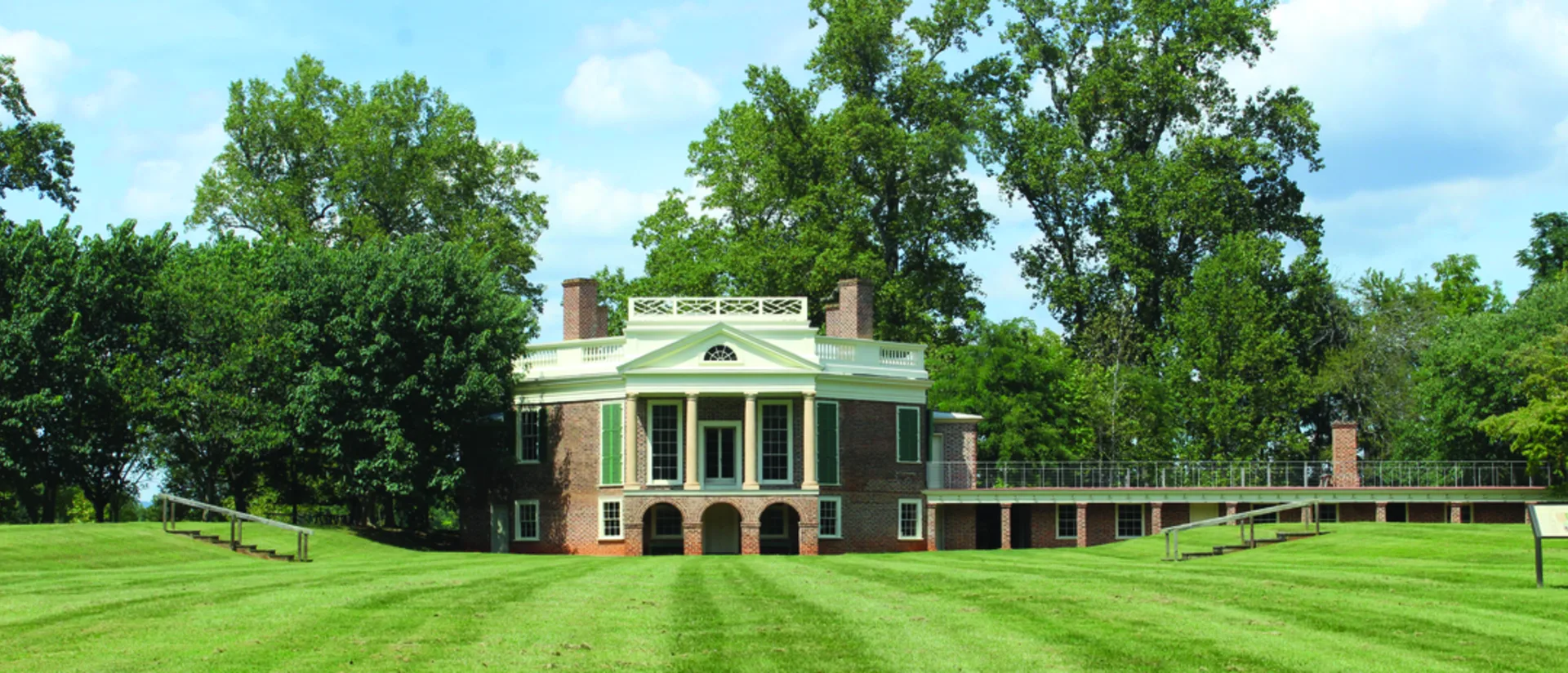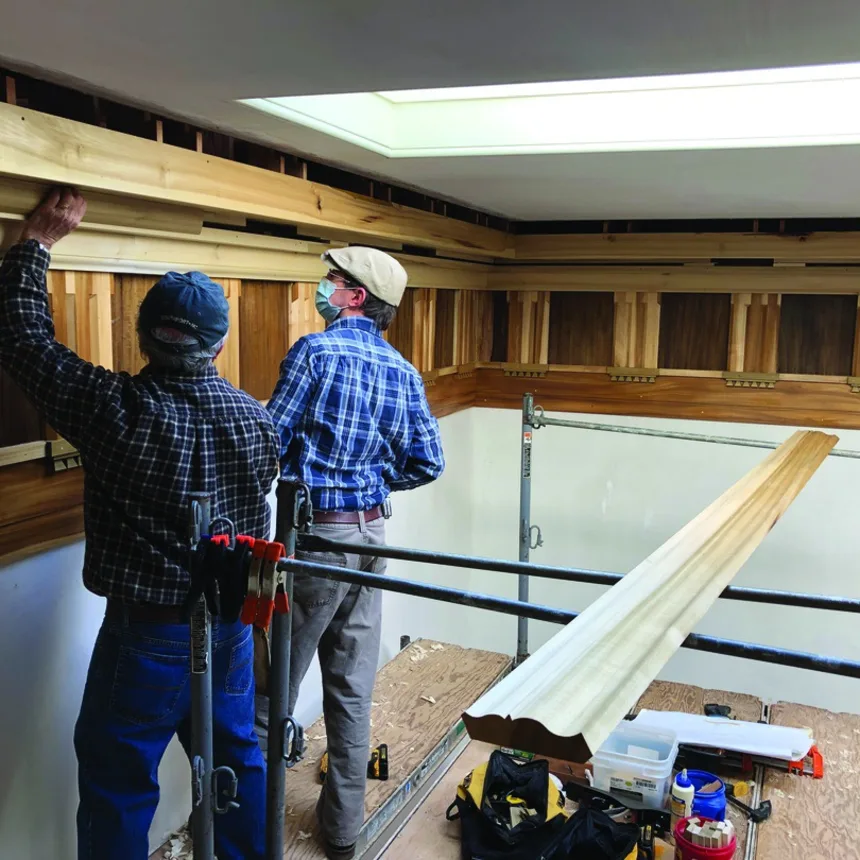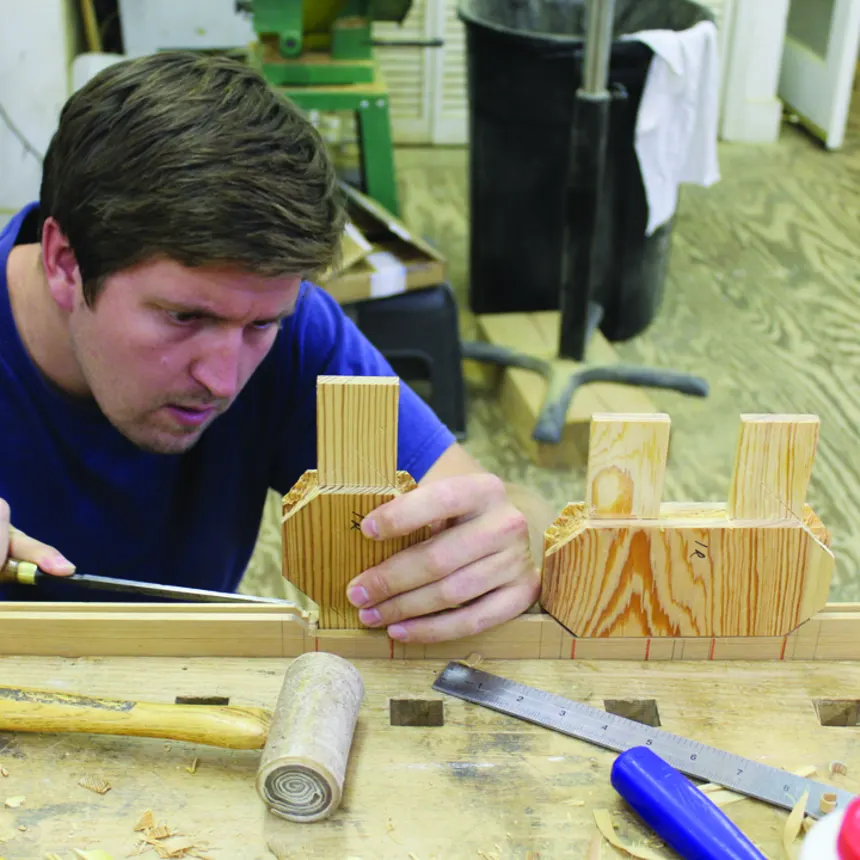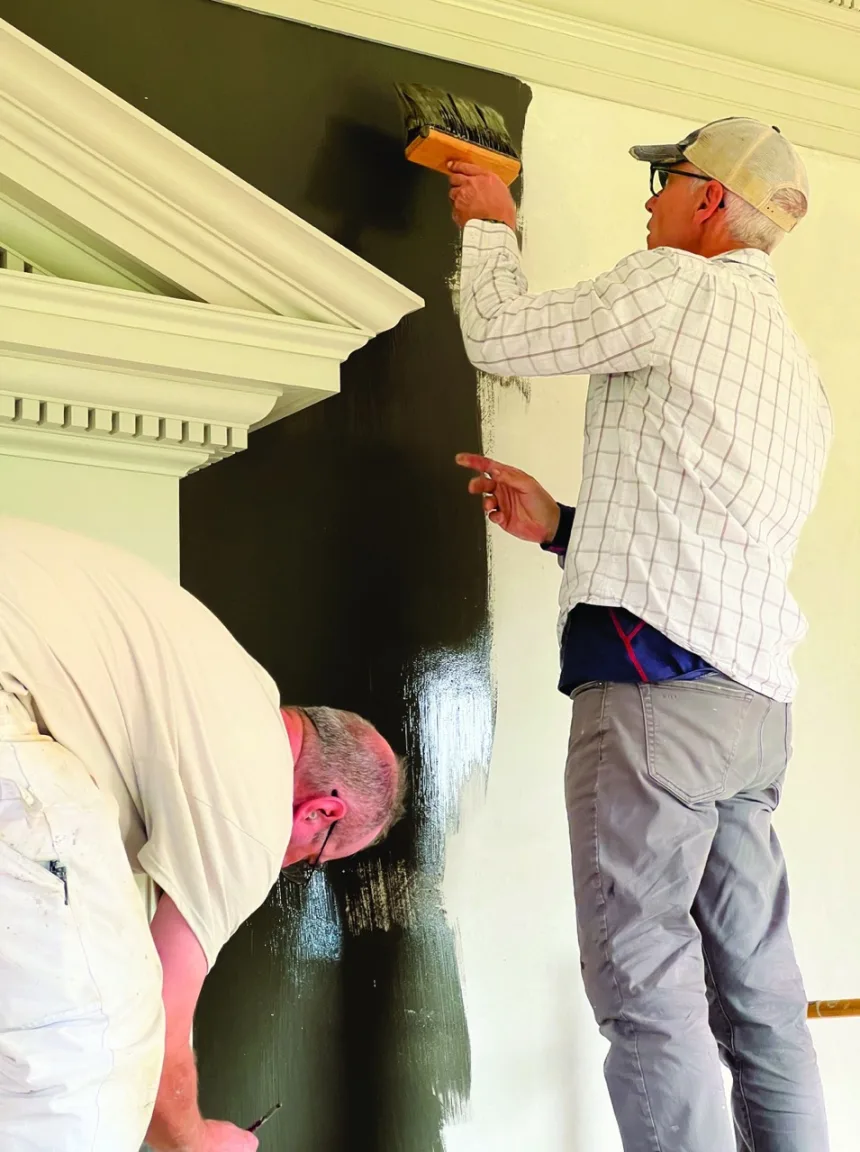This month’s Traditional Building magazine offers a feature-length article I penned on the preservationists, architects and artisans who have worked steadily over the past 34 years to restore Thomas Jefferson’s design for his Bedford County retreat – as well as the finish work by his enslaved master joiner, John Hemings. A+A is pleased to post the feature here today:
Most design aficionados are familiar with Thomas Jefferson’s masterful marriage of landscape and architecture at the University of Virginia. They know about his 40-year love affair with “putting up, and pulling down” the idiosyncratic walls at Monticello.
But his eight-sided retreat in rural Bedford County near Lynchburg, Virginia? Not so much.
That’s because the home, built between 1806 and 1826, was a private residence until 1983, when it was acquired by the Corporation for Jefferson’s Poplar Forest. Jefferson began living there off and on in 1809, while the home was still under construction. In 1823 he passed it on to his grandson, Francis Eppes. After Jefferson’s death in 1826, Eppes sold it in 1828. Its new owner, William Cobb, lived there and farmed its land. His daughter married Edward Hutter in 1840, and the property remained in the Cobb-Hutter family until 1946.
Jefferson’s original interiors were lost in an 1845 fire that burned down to its brick walls. It was completely rebuilt, but not according to its architect’s plans. After 1946, two more owners altered it, inside and out. “It had been nicely furnished and smoothed over, but it was totally denatured and a bit of a dump,” says Bill Beiswanger, former director of restoration at Monticello and member of Poplar Forest’s advisory panel.
“It was a mess, but it was known as a Jefferson design,” says Richard Guy Wilson, retired professor of architectural history at the University of Virginia, and now a member of the National Historic Landmarks Committee.
In 1989, the Corporation for Jefferson’s Poplar Forest hired architectural historian Travis McDonald to investigate potential restoration for the building. A veteran of major historic preservation projects in Richmond and Colonial Williamsburg, McDonald proved an inspired choice for the first phase of a restoration that’s taken 34 years.
“He immediately provided gravitas to the restoration process,” says David J. Brown, former executive vice president and chief preservation officer at the National Trust for Historic Preservation.. “He said it was an incredibly important place, in terms of world heritage, and that the organization had the opportunity to do it right. He helped the staff think the process through.”
McDonald recognized the opportunity to look into Poplar Forest’s restoration in a near-archeological way, one not often pursued in U.S. preservation circles. “Travis advised the organization to take its time and complete the restoration over decades, and to be very thoughtful about techniques and materials,” says Brown, who served on the Poplar Forest board of directors. “He emphasized authenticity and attention to details, and he brought in experts to help the organization think through these issues.”
The board gave McDonald and his team the time and resources for a world-class restoration, realizing the process was as important as the restoration itself. “It met the standards of a place associated with Jefferson, and built by enslaved Africans, and it recognized all those contributions,” Brown says.
By 1992, McDonald had investigated the home enough to believe it could be restored. He began documenting what he found on site and sending that to consulting architects Jeff Baker and John Mesick, who drew it up. “We had very detailed drawings, the equivalent of working drawings,” McDonald says. “They showed how every piece fits together.”
McDonald hired architectural historian Al Chambers to locate every possible document related to the house. Some came from Jefferson, who wrote detailed instructions from the White House and Monticello to workers who wrote back. “The letters are better than a stack of drawings,” he says. “Al was the architectural historian for the Historic Architectural Building Survey; he’d had a team document the house in 1985.”
Some of the most intriguing correspondence took place after 1815 when Jefferson sent his enslaved master joiner, John Hemings, from Monticello to Poplar Forest. With him were his three nephews, offspring of Jefferson and Sally Hemings, John’s sister.
Hemings could read and write—he’d read Jefferson’s books on architecture—and had been trained by skilled English and Irish joiners at Monticello. He and Jefferson wrote back and forth, in a shared architectural language, about the construction of the house. “Every square inch of this house is right out of Palladio’s The Four Books of Architecture,” McDonald says. “I researched his letters and his workers’ letters.”
As Calder Loth, senior architectural historian (retired) for the Virginia Department of Historic Resources notes, Palladio drew no octagonal structures, but he did favor the configuration of five buildings on a site. In the case of Poplar Forest, Jefferson placed the main house at the center, then added an eastern terrace that leads to a freestanding privy. “On the other side is a row of mulberry trees that lead to a 12-foot mound that’s connected to another privy,” Loth says. “So it’s a five-part composition.”
Inside, the architecture refined McDonald’s knowledge of Jefferson’s detailing. Workers removed plaster from the 1940s, then what had been applied after the 1845 fire. Brick walls revealed ghost marks of wood trim, showing both size and kind. “We could see the marks for how big the chair rail was, but not what it looked like,” he says. “Then we’d go see every chair rail he’d ever done, and they were all the same.”
Two original doors with Hemings’ signature molding were saved from the 1845 fire and then used in the house; they are now on display there. Precise replicas were created in Virginia walnut by Blaise Gaston of Charlottesville. The exterior woodwork was executed by Gaston and Wyatt, with Rick Wyatt at the helm after Gaston left the firm.
McDonald’s architectural, archeological, and documentational sleuthing sets Poplar Forest’s restoration apart from all others. He was fortunate that Jefferson wrote so much about it, since the clues he left behind helped position this buffed-up architectural gem as the missing link in his major works. “It’s similar but unique—in a familiar way,” McDonald says.
Alongside the University of Virginia and Monticello, Poplar Forest rounds out a trifecta of Jeffersonian Classicism in the Virginia Piedmont. TB
For more, go here.

